- Brevard Community College is committed to engaging our diverse population in quality, accessible learning opportunities which successfully meet individual and community needs.
School Highlights
Eastern Florida State College serves 17,427 students (36% of students are full-time).
The college's student:teacher ratio of 17:1 is lower than the state community college average of 20:1.
Minority enrollment is 40% of the student body (majority Hispanic), which is less than the state average of 67%.
Quick Stats (2025)
- Enrollment: 17,427 students
- In-state tuition: $2,496
- Out-state tuition: $9,739
- Student:teacher ratio: 17:1
- Minority enrollment: 40%
- Source: Integrated Postsecondary Education Data System (IPEDS)
Top Rankings
Eastern Florida State College ranks among the top 20% of public schools in Florida for:
School Overview
The teacher population of 1,043 teachers has stayed relatively flat over five years.
Eastern Florida State College
(FL) Community College Avg.
Carnegie Classification
Baccalaureate/Associate's Colleges: Mixed Baccalaureate/Associate's
Not applicable, not in Carnegie universe (not accredited or nondegree-granting)
Institution Level
Four or more years
At least 2 but less than 4 years
Institution Control
Public
Private not-for-profit
Total Faculty
1,043 staff
139 staff
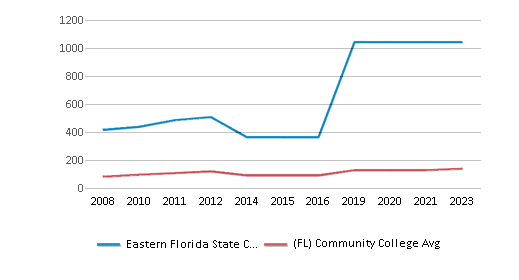
School Calendar
Student Body
The student population of Eastern Florida State College has grown by 13% over five years.
The student:teacher ratio of 17:1 has increased from 13:1 over five years.
The Eastern Florida State College diversity score of 0.59 is less than the state average of 0.76. The school's diversity has stayed relatively flat over five years.
Total Enrollment
17,427 students
646 students
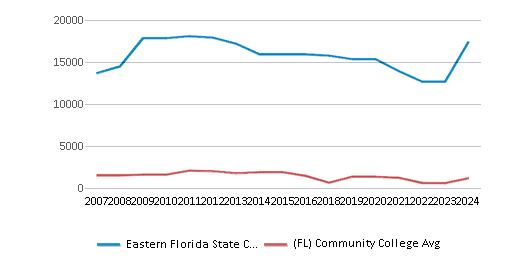
Student : Teacher Ratio
17:1
20:1
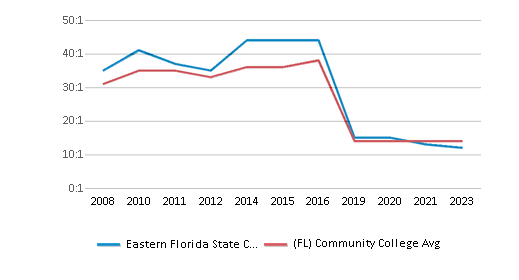
# Full-Time Students
6,222 students
587 students

# Part-Time Students
11,205 students
557 students
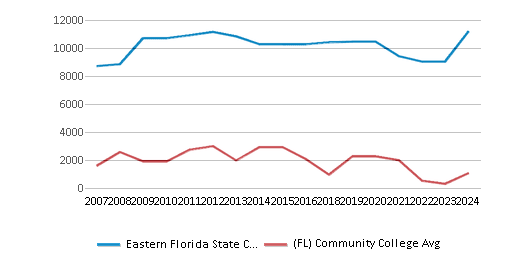
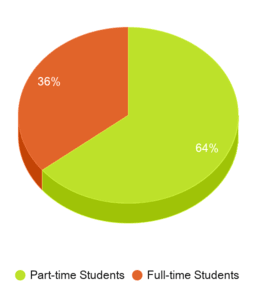
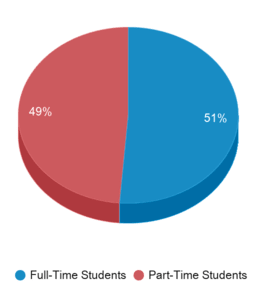
# Enrollment Undergraduate
174 students
261 students
# Full-Time Undergraduate Students
6,222 students
574 students
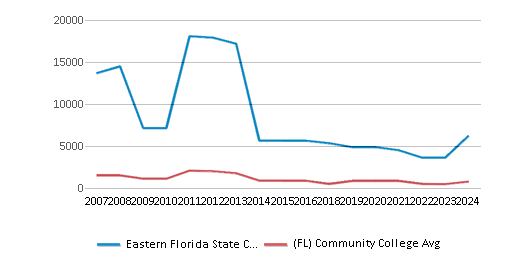
# Full-Time Graduate Students
n/a
85 students
# Part-Time Undergraduate Students
11,205 students
648 students
# Part-Time Graduate Students
n/a
36 students
Total Dormitory Capacity
n/a
174 students
% American Indian/Alaskan
n/a
n/a
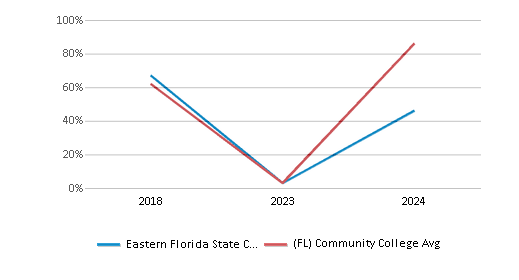
% Asian
3%
5%
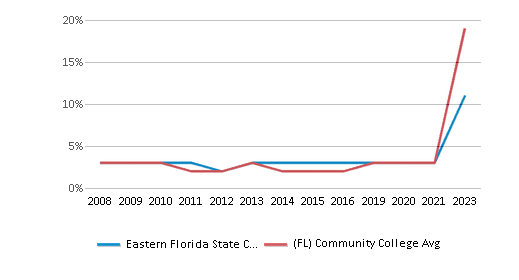
% Hispanic
17%
30%
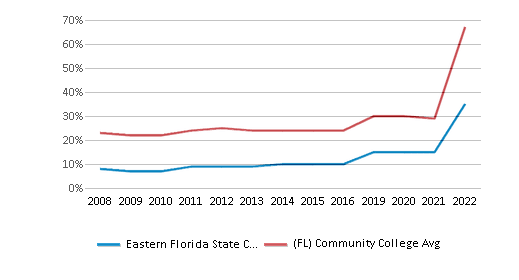
% Black
11%
19%
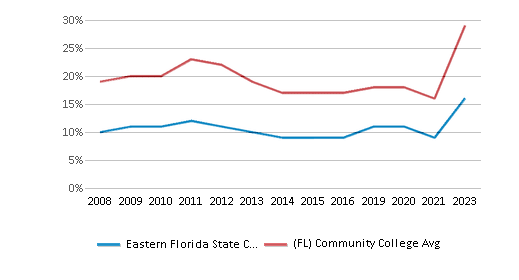
% White
60%
33%
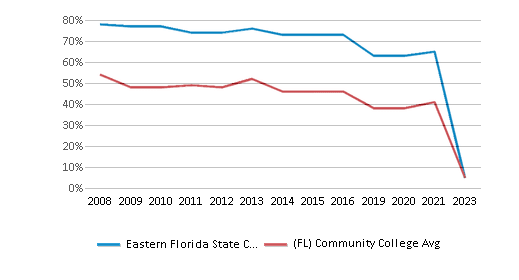
% Hawaiian
n/a
2%

% Two or more races
6%
4%
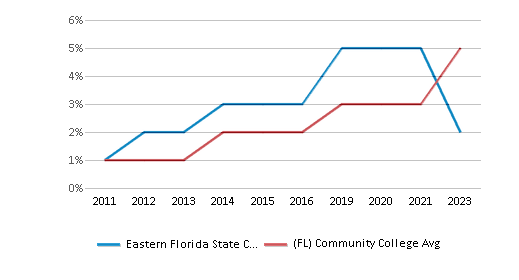
% Non Resident races
1%
2%
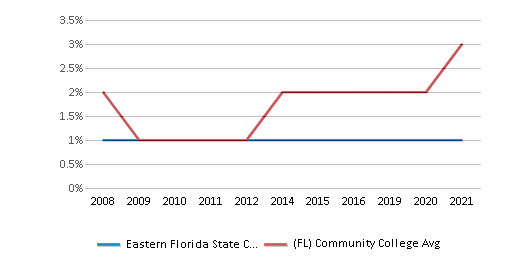
% Unknown races
2%
5%
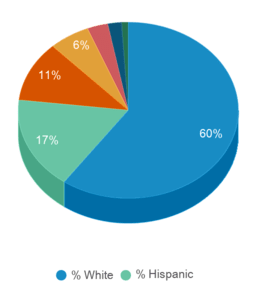
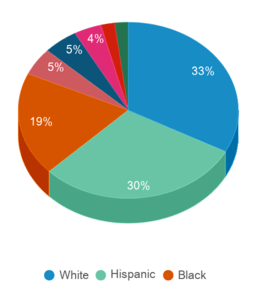
Diversity Score
0.59
0.76

College Completion Rate (Students who graduate in less than 4 years)
42%
57%
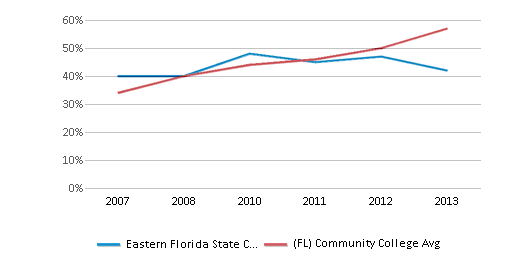
College Completion Rate (Students who graduate in 4 years or more than 4 years)
0.5117%
0.4334%
Average Graduate Earnings (10 Years)
$32,400
$31,500
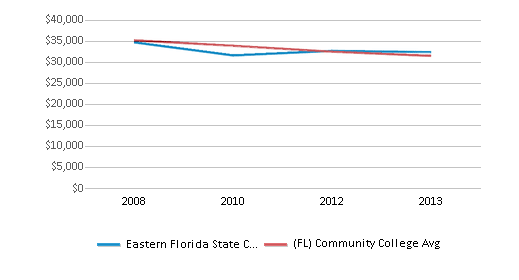
Tuition and Acceptance Rate
The public in-state tuition of $2,496 is less than the state average of $3,280. The in-state tuition has stayed relatively flat over four years.
The public out-state tuition of $9,739 is less than the state average of $10,578. The out-state tuition has stayed relatively flat over four years.
In-State Tuition Fees
$2,496
$3,280
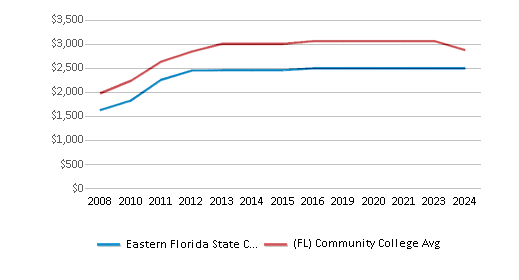
Out-State Tuition Fees
$9,739
$10,578
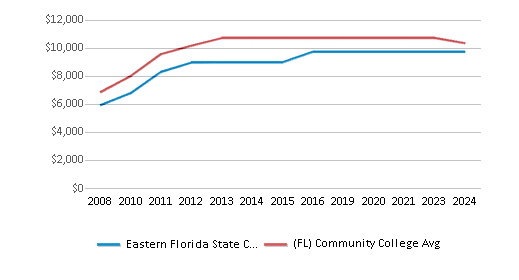
% Students Receiving Some Financial Aid
89%
88%

Median Debt for Graduates
$12,000
$9,750
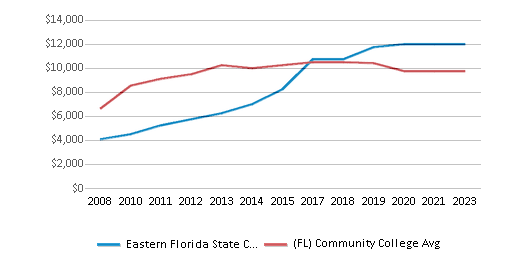
Median Debt for Dropouts
$6,181
$5,500
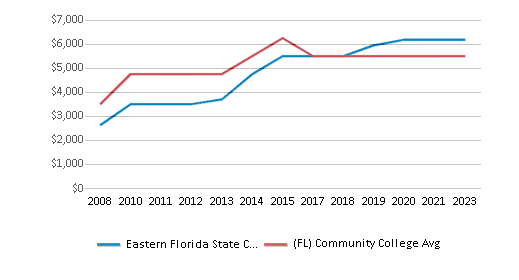
Acceptance Rate
n/a
94%
SAT Reading
n/a
442
SAT Math
n/a
429
ACT Composite
n/a
18
ACT English
n/a
18
ACT Math
n/a
18
Source: 2024 (or latest year available) Integrated Postsecondary Education Data System (IPEDS)
School Notes
- Situated on Florida's Space Coast, BCC has four integrated campuses – in Cocoa, Melbourne, Palm Bay and Titusville – an aerospace program at the Kennedy Space Center and a Virtual campus. BCC's diverse 25,000+ student body is made up of high school graduates, business professionals, retirees and everyday people who are university-bound, seeking new career paths or simply following a love of learning. Brevard Community College offers a variety of degree and certificate programs designed to help you transfer to a four-year college or go directly into the workforce. Also, we offer many non-credit courses for students who simply wish to upgrade their skills. BCC serves almost half of the county's residents with educational programs and cultural, sporting, and entertainment events. BCC has a rich athletic tradition, with nine National Junior College Athletic Association titles, 25 conference championships, and 21 Florida Community College Athletics Association titles. BCC is a member of the Suncoast Conference of the FCCAA. BCC is accredited by the Commission on Colleges of the Southern Association of Colleges and Schools. Located on the Cocoa Campus are three of the world's most technologically advanced facilities: The Astronaut Memorial Planetarium, the BCC/UCF Joint Use Library, and the Florida Solar Energy Center. Together these facilities comprise the main components of the Florida Circle of Science and Technology.
Frequently Asked Questions
How much does Eastern Florida State College cost?
Eastern Florida State College's tuition is approximately $2,496 for In-State students and $9,739 for Out-State students.
What is Eastern Florida State College's ranking?
Eastern Florida State College ranks among the top 20% of community college in Florida for: Least expensive tuition and Largest student body.
Recent Articles

Obtaining Your Bachelor's Degree at a Community College
Explore the evolving landscape of community colleges offering bachelor's degrees, addressing affordability, accessibility, and workforce needs.

A to Z of Community College Certificates and Courses
From business and healthcare to technology and skilled trades, the article showcases the breadth of options available to students seeking to enhance their knowledge, develop new skills, or pursue career advancement.

What is a Community College?
This comprehensive guide explains what a community college is, its history, and its role in higher education. It covers the types of programs offered, differences from four-year colleges, benefits of attending, and important considerations for prospective students, providing valuable insights for those exploring educational options.









